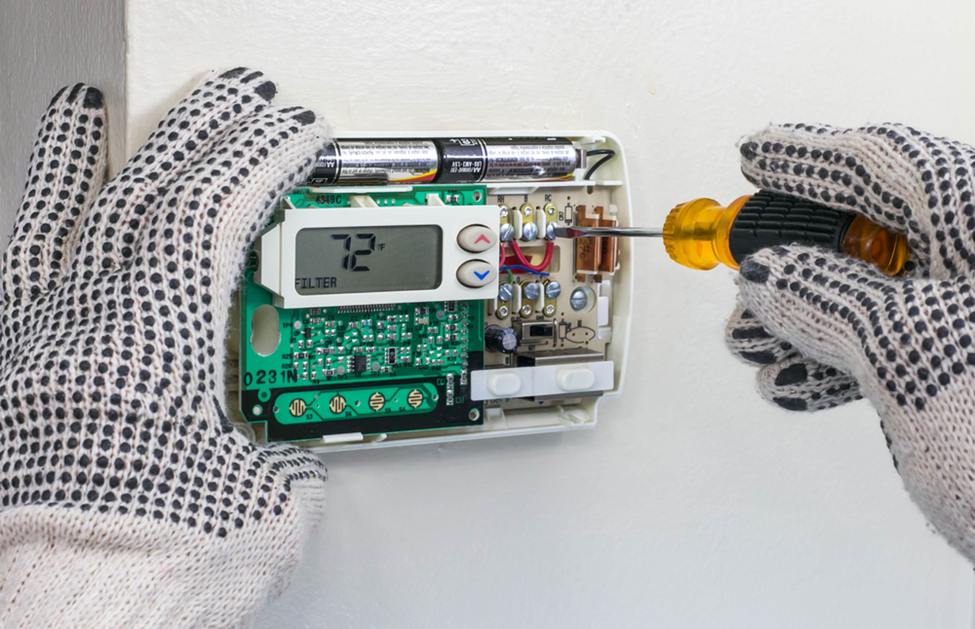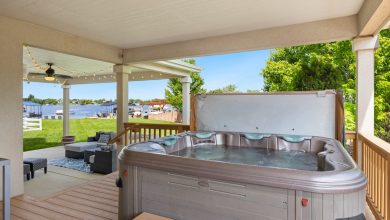
HVAC Troubleshooting: 6 Signs Your Thermostat Isn’t Working
Having a functional HVAC system is crucial. In addition to being too hot, it can also be humid during the day and at night. You must be able to regulate your indoor environment to prevent health issues brought on by heat. It’s crucial to ensure that your home provides you and your family with the enjoyment and comfort you deserve. The heating and cooling techniques will not function when there are issues with the thermostat. Hence, you need HVAC repair service, as they are professional and help you with your thermostat problems. Here are six indicators that your thermostat needs to be repaired.

6 Signs your thermostat is not working:
· HVAC is not getting started.
The most crucial component of any heating and cooling system is the thermostat. You might assume that your air conditioner, heat pump, or furnace has broken down if you can’t use the thermostat to switch the thermostat to working condition. Fortunately, this seemingly complex issue is frequently an indication that your thermostat has reached the end of its useful life or has malfunctioned unexpectedly. The good news is that replacing a broken thermostat is significantly less expensive than fixing a heater or air conditioner.
· Your HVAC system is constantly running.
In the same way that it controls when your heating and cooling systems are turned on, your thermostat also controls when these systems are turned off. Your thermostat will instruct your furnace or air conditioner to shut off whenever the interior temperature reaches the desired level. You may need to calibrate your thermostat if chilled air keeps entering the house, even when it is already freezing inside. This component won’t be able to assist in maintaining the ideal temperature if it cannot reliably read the inside temperature.
· Variable temperature readings inside the house.
Many residents have invested in ductless, multi-split air conditioners that enable them to independently chill various rooms or zones. These can cause significant variations in temperature and temperature readings across the facility. Even some homes have zoned central HVAC systems that provide the same level of efficiency and comfort in every area. However, your thermostat may be broken if your home uses a standard central HVAC system and the temperatures in different rooms vary.
Keep in mind that numerous factors might contribute to hot and cold patches. If a room feels too warm, check to verify if all the air vents are open. If hot areas don’t have airflow obstructions, the issue is most likely a malfunctioning thermostat. The entire living area should be able to be heated and cooled uniformly using a central thermostat and central cooling system.
· Rapid cycling
When short-cycling occurs, your system temporarily powers up before abruptly shutting down. It operates in brief power spurts that barely affect the interior temperature. The air filter is one of the first to examine when your air conditioner is short-cycling. Short cycling might result from this being obstructed by a build-up of lint, dirt, and other debris. Short cycling can still occur even if you replace the filter on time and follow the schedule if the thermostat is malfunctioning or not reading the temperature correctly.
· Programmed settings regularly get removed.
Remember that if you’ve already made the wise and well-liked choice to purchase a programmable thermostat, it should retain all of the data you’ve entered for a considerable time. If you repeatedly enter this information, your thermostat may be damaged or at the end of its serviceable life. You should be able to preserve capital and live a lot easier life with a good programmable thermostat. A programmable thermostat shouldn’t increase energy costs or give you the willies.
· Temperature set changes have no impact.
Your heater and air conditioner should immediately respond when you alter the settings on your thermostat. Once you’ve established a colder temperature, you shouldn’t wait long for the air conditioner to start if it’s too hot inside. Never let it take more than a few seconds for your cooling system to start. Additionally, as soon as you transmit the appropriate instruction through your thermostat, you should be able to turn off your air conditioning if the rooms feel too cold. Get the thermostat checked as quickly as possible if it doesn’t respond.
Other Things to Think About
Here mentioned are some other things you should think about when trying to figure out why your thermostat isn’t working:
o Make sure the thermostat is clean on the inside.
o Check to see if the thermostat box is level. If it isn’t, the accuracy of the part inside could be affected.
o Check where your box is because putting it in direct sunlight or near drafty windows and doors can make it hard to keep the right temperature.
o Check to see if the anticipator is set correctly. Check the inside of a mechanical thermostat for a small metal tab attached to a round dial. First, try a light push in either direction on the account to see if that fixes the problem. If not, you might need to set it to the ampere setting on the furnace. It is easiest to do by reading the owner’s manual or following the directions on the service panel.
What causes thermostats to fail?
The most evident and frequent cause of thermostat failure is age. If your thermostat is outdated and out-of-date, it generally won’t function properly for very long. When these components have served their purpose no longer, they are unreliable and susceptible to breaking down at any time. A broken air conditioner is an excellent bummer when it’s hot outside. But it can be much more comforting to know that your AC is functioning normally and that the issue is with a small, inexpensive part. Consider how old your thermostat is and make a plan to replace it before it breaks.
What are you doing with your thermostat?
It may shorten a thermostat’s lifespan, and installation issues may reduce its ability to read the temperature accurately. Consider where your thermostat is, for instance. It can be situated in an area with abundant natural light all day. Your thermostat will display a much different temperature than it should if the sun is directly overhead. The same thing may occur if the thermostat is placed close to an oven or another continuous heat source. Ensure you don’t position any heating-generating wall, shelf, or counter-mounted appliances close to your thermostat. Early detection and correction of such issues might prevent them from worsening and possibly becoming permanent.
Why is it a good idea to upgrade your thermostat?
If you have an outdated thermostat towards the end of its useful life or one that lacks the bells of more modern thermostats, upgrading it is a terrific way to save money and improve the comfort of your home thermostat issues. Customized heating and cooling are now possible thanks to intelligent thermostats that may be configured. Before you arrive, these items can heat or chill your house. They can programme the heater and air conditioner to operate when you specify. They are also a simple way to lessen your carbon footprint and prevent your HVAC system from deteriorating earlier than necessary.
You can meet all your requirements at our place as we are the top HVAC Repair in San Diego. We can promptly identify and resolve the issue thanks to our indoor air quality services, AC maintenance and repair services, and thorough inspections of your HVAC system. The top company in San Diego can also work with you to make your house as cozy and energy-efficient as you like. Call us now to schedule a thermostat inspection or learn more about the other services and goods we provide.
Apart from this, if you are interested to know more about Installation services then visit our Daily Bites category.




